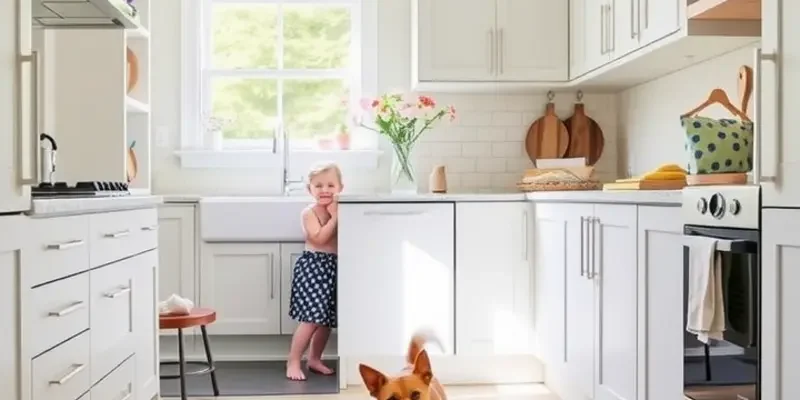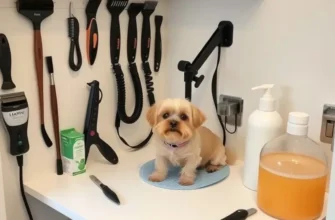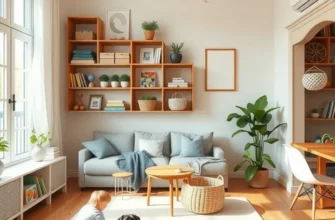Setting up a welcoming kitchen that accommodates both pets and children is essential for families who want a safe yet stylish home. The kitchen is often the heart of the home, bustling with activity and shared moments. Designing this space with a focus on safety, convenience, and aesthetics is key, especially when furry family members and little ones are involved. In this guide, we’ll explore how to maximize your apartment kitchen setup, ensuring it’s pet-friendly while still being functional and beautiful. From selecting the right materials to organizing useful spaces, these insights aim to create an environment that fosters bonding, creativity, and joy. Whether you’re a couple planning for future children, a family with pets, or a renter looking to redesign your kitchen, this guide will offer practical advice tailored to your needs. Let’s dive into some thoughtful ways to blend style and function in your pet-friendly kitchen!
Choosing the Right Materials
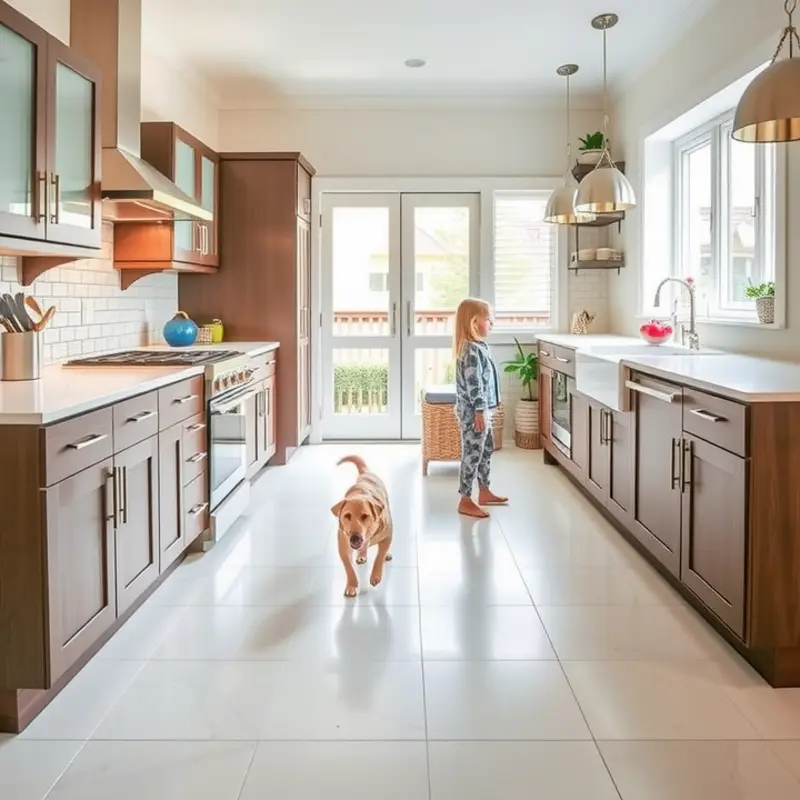
When designing a kitchen that seamlessly accommodates both pets and children, the selection of materials plays a crucial role. Opting for durable, easy-to-clean, and safe materials ensures longevity and safety without sacrificing style. Let’s explore some of the best materials for key components in your kitchen, including flooring, countertops, and cabinetry.
Flooring
A pet and kid-friendly kitchen demands flooring that withstands spills, scratches, and the clatter of little feet and paws. One excellent option is vinyl flooring, known for its resilience and cost-effectiveness. It’s resistant to water and scratches, making it a practical choice for high-traffic areas. Additionally, vinyl offers a softer surface than tile or hardwood, adding a layer of safety for any tumbles.
Laminate flooring is another viable choice due to its durability and ease of maintenance. With a variety of designs mimicking hardwood or stone, laminate provides aesthetic flexibility without the maintenance hassles. Always check for slip resistance with laminate to ensure a safe environment.
Countertops
When it comes to countertops, the priorities are durability and ease of maintenance. Quartz countertops excel in these aspects. They are hard, resistant to stains, and do not require sealing, unlike natural stone. This makes them an ideal surface for busy families with pets and kids, where stain-prone ingredients are part of daily routines.
For a more budget-friendly choice, consider solid surface countertops, which offer a range of colors and patterns. They are non-porous and thus resist bacteria, an added benefit when children are involved. While not as heat-resistant as quartz, solid surfaces can be repaired should scratches or chips occur.
Cabinetry
Pets and children often interact with lower cabinetry, making the choice of materials and finishes important. Thermofoil cabinets are a strong candidate; their smooth finish is easy to wipe clean, and they’re less prone to warping from moisture than traditional wood cabinets.
For a more natural look, hardwood cabinets with a durable finish can provide beauty and resilience. When choosing wood, look for options with a tough polyurethane finish to protect against scratches and stains. Soft-close hinges are an added bonus, preventing small fingers or paws from getting caught.
Overall, selecting the right materials involves balancing aesthetic desires with practical needs for durability and safety. For additional insights on blending functionality with style in pet and kid-friendly spaces, consider visiting apartment-friendly craft storage, which provides creative solutions to maximize space efficacy in small settings. Taking the time to choose the best materials ensures your kitchen is a welcoming environment for the entire family.
Smart Organization Strategies
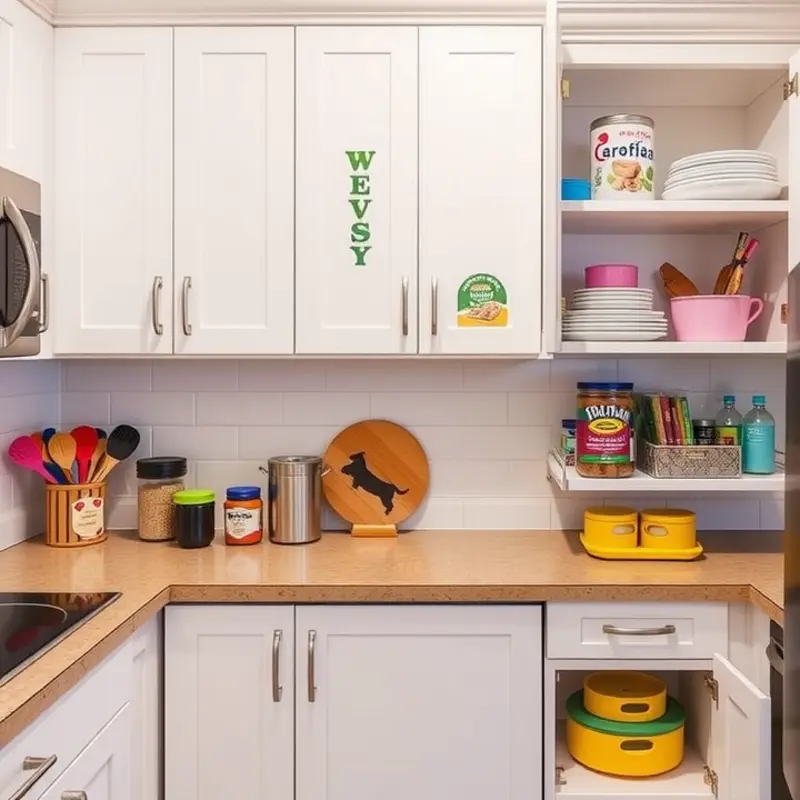
Creating a snug kitchen that accommodates both pets and children can seem challenging. The key lies in thoughtful organization that prioritizes safety while ensuring accessibility. Here are some smart strategies to harmonize your kitchen, reducing risks and fostering a welcoming ambiance.
Strategic Storage Solutions
Begin by assessing your storage needs. Subdivide the kitchen into zones. Store pet items separately from tools used by children. Use upper cabinets for dangerous items such as cleaning supplies, knives, and fragile kitchenware, keeping them out of reach.
Consider using drawer dividers and cabinet organizers that make the most of vertical space. Utilizing more of your vertical space can help declutter countertops, giving children and pets room to explore safely. For a DIY touch, you could also explore renter-safe plant stands that can double as storage solutions for light items.
Pet-Friendly Corners
Designate a specific area for your pet’s needs. Choose a spot where food and water bowls won’t easily be tripped over. Consider placing their feeding zone away from the main traffic areas. A small mat can keep bowls steady, minimizing spills.
When it comes to pet supplies, containers with secure lids provide safe and accessible storage. You can even label these for easy identification. Pet treats and toys deserve their own storage space, located at a height accessible to kids but not pets.
Kid-Safe Access Points
Create an area where kids can safely interact with the kitchen. Designate a lower drawer or cabinet for kid-friendly items like plastic cups, plates, and bowls. This allows children to help themselves while keeping breakables and hazardous items tucked away.
Incorporate childproof locks on cabinets containing dangerous substances or objects. Make sure all small appliances, such as mixers and toasters, are unplugged and stored after use. This not only minimizes accidents but provides extra counter space for other activities.
Daily Essentials Access
Ensure daily essentials are within comfortable reach for both taller children and adults. Bulkier items and less frequently used appliances can be stored in the highest or lowest cabinets. Install wall hooks or magnetic strips for lightweight, everyday items like mittens or soft toys. This technique not only maximizes space but also ensures items are within reachable height.
Conclusion of Strategies
By segmenting storage and access points strategically, you drastically reduce potential accidents while fostering a cozy environment for both kids and pets. Employing these strategies will help maintain order while accommodating the diverse needs of your family-friendly kitchen.
Final words
Creating a pet-friendly kitchen that is also child-safe is a rewarding endeavor for any family. By choosing durable, easy-to-clean materials and implementing smart organization strategies, you can craft a space that promotes togetherness while ensuring safety. This harmonious environment encourages cooking together, sharing meal prep, and building cherished memories with both pets and young children. As you embark on your journey of designing your kitchen, keep in mind that these adjustments can make—a huge difference in creating a functional yet cozy space. With thoughtful planning, your kitchen can be a joyful and safe haven for the entire family. Embrace these ideas and let your kitchen reflect the love and care you have for all your family members—two-legged or four-legged.

